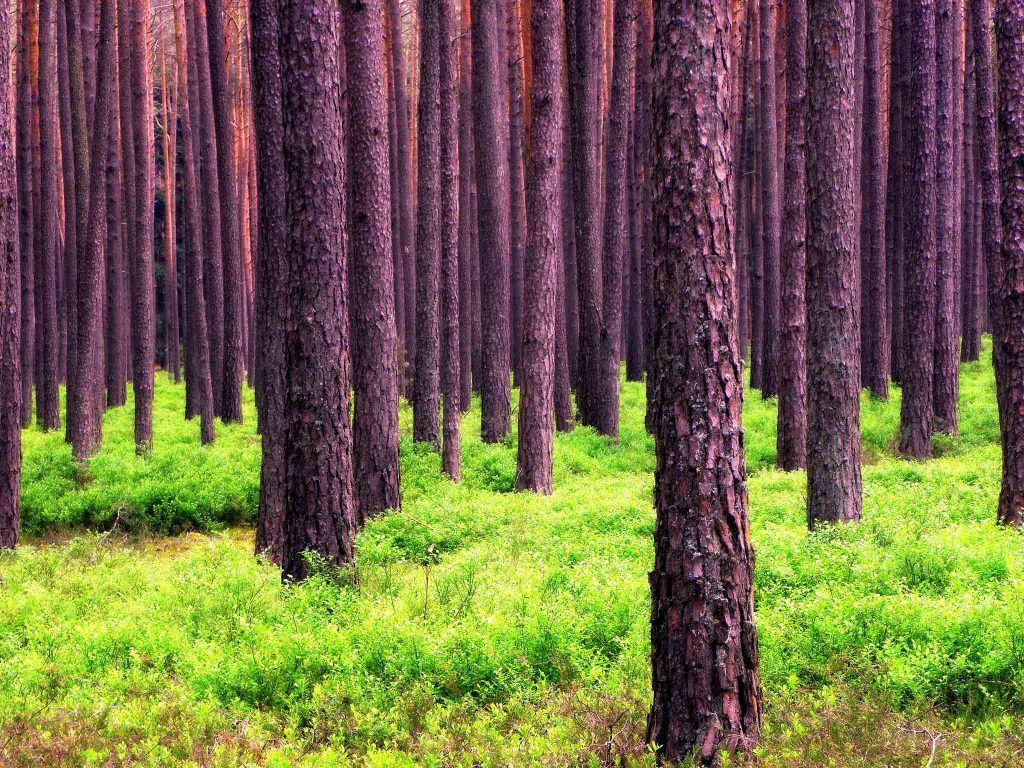I live in a dark wood whose icy blue shadows have long been cast across my heart. Rich almost unto excess, the Yaak Valley is filled with soft-shaped mountains that resemble lying-down men and women. Rich in its four distinct seasons, the valley spans the Montana—Idaho—British Columbia border. Its array of eccentric human characters are scattered through the forest, but the Yaak is richest of all in its diversity of life forms. It’s a place of anomalies and opposites, of paradoxes—or rather, what seem only at first to be paradoxes, but which really are each other’s complements of the whole.
It is this richness—this fullness of opposites—that gives the valley such a feeling of completeness, a resonance that is palpable even to a visitor.
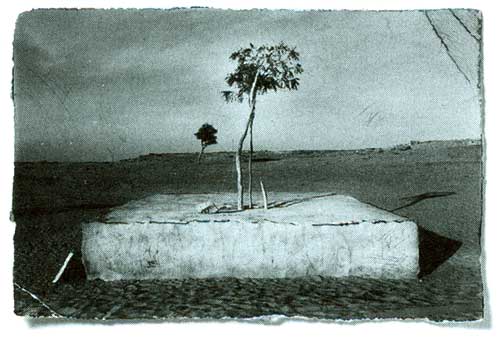
Always, in this valley, there are two things, whereas in some other valley, some other landscape, there might be only one. In this dark wet forested swampy jungle of a mountain valley (it’s the northernmost valley in Montana, and yet its elevation is the lowest in the state), the shadows of things seem as real and distinct as the “things” themselves. Sometimes you can’t say which is shadow and which is shadow-caster. It’s not just the way the mountains blend into the fog and clouds of the Pacific Northwest; rather it’s something less noticeable, less definable. Things have not yet been decided; no one thing or way-of-being is dominant. Everywhere, through so many patterns and examples, there is the sensation of unfolding, of birthing, of all the vigorous processes of life. Everywhere, seedlings of one species sprouting out of the fallow corpses of the giants of another. Ravens cawing loudly and flying through the rainy forest with scraps of deer hide gripped tight in their shining ebony beaks. Moss-covered skeletons of deer and elk and moose, the loosened strands of their vertebrae sliding down the hills like pearls spilled from some great necklace, dissolving back into, and enriching, the soil.
If I may lean heavily on one last abstraction, I’d say that this valley has the living dignity of great energy and enthusiasm—a vigor of such magnitude that we’re conditioned, I think, to view it as excessive, when all it really is is complete. Nothing has ever gone extinct here. Even its shadowiness casts shadow back.
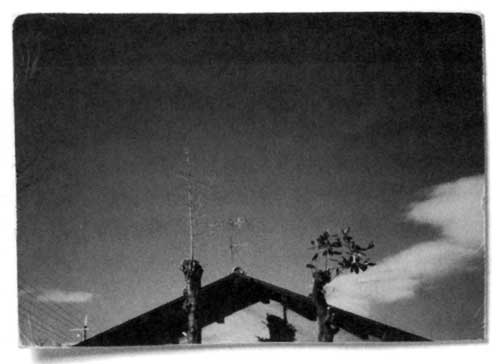
What is rare throughout much of the West is common in the Yaak. Rather than having one tree species dominate the canopy—for example, lodgepole pine—the forests of the Yaak are likely to share their canopy equally among several species. Giant larch neck-and-neck with Douglas fir or even Western white pine.
A giant cedar, which is a moisture- and shade-loving species, might stand directly next to a giant Ponderosa pine, which is typically a lover of dry, warm sites. And flanking these two opposites there might be others—the deciduous, soft-wood colonies of birch and aspen tower nearly as high, and spruce and hemlock share the canopy as well. The forest cannot be stamped as belonging to any one type, which is precisely, of course, what gives the Yaak its oneness: the oneness of a complex and complete diversity, a oneness of earned and competitive tolerance, rather than exclusivity.
Because this wedge of a valley (shaped like a deer’s thick heart, or a bear’s) exists in a unique seam between the northern Rockies and the Pacific Northwest—possessing, for the most part, the landscape of the former, but carved and shaped by the weather patterns of the latter—the Yaak expresses itself through this two-storiedness, this double richness. There are two kinds of deer, not one, in these mountains: mule deer, as well as white-tailed deer. There are moose and elk, and even an occasional woodland caribou, a species that is itself single-handedly capable, I’d posit, of infusing a valley with magic. A sprinkling of mountain goats, and of bighorn sheep. Not just golden eagles, but bald eagles, too. Not just coyotes, but wolves. Not just bobcats and mountain lions, but lynx. Not just martens, but wolverines.
Not just black bears, but grizzlies. Not just south-slope wildfires, but north-slope fungal rot. Salamanders and ice; frogs and glaciers. It’s all twined up together, a glorious thrumming creation. And while it’s true that nothing has quite yet gone extinct (I know of no other valley in the Lower 48 for which this can be said), the Yaak’s fullness is deeply imperiled, for so many of its rare animal populations are down to but single or double digits. (For that matter, there aren’t but about 150 people who live here year-round. Canada bounds us to the north; Idaho’s spiny mountain wall of rock and ice ascends to the west; the enormous man-made reservoir of Lake Koocanusa, ninety-plus miles long, lies to the east; and the Kootenai River curves to our south. The Kootenai receives the arrow of the straight-running Yaak River that drains this valley into the larger world.)
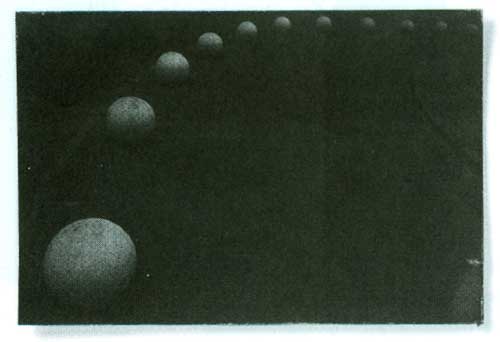 In this strange shadowed land of twoness rather than oneness, all the various species somehow manage to find their place and to share it. When one species goes up a mountain, another will often come down, so that their movements of accommodation act like the pistons of some unbelievably powerful engine, or if not of a machine, then of some larger, living organism. Or like a story, as the braids of movement and migration, the accommodation, the coming-and-going, sleep and awakening of all these species resemble the flow of narrative of a delicious and old-fashioned Russian novel, perhaps, which one might not quite understand for the longest time. Looking out at this valley, reading it, one might discover oneself as just another character, another element in its unfolding story.
In this strange shadowed land of twoness rather than oneness, all the various species somehow manage to find their place and to share it. When one species goes up a mountain, another will often come down, so that their movements of accommodation act like the pistons of some unbelievably powerful engine, or if not of a machine, then of some larger, living organism. Or like a story, as the braids of movement and migration, the accommodation, the coming-and-going, sleep and awakening of all these species resemble the flow of narrative of a delicious and old-fashioned Russian novel, perhaps, which one might not quite understand for the longest time. Looking out at this valley, reading it, one might discover oneself as just another character, another element in its unfolding story.
Because nothing has yet been decided, there is the feeling, the belief, that there is still room for everyone, for anyone. For one’s true-heart beliefs and desires.
How do you make any decision at all, when everywhere you turn there seem to be twice as many ways of being, twice as many options—any of which, it would seem, could honor the landscape and its myriad diversities? How do you seek or carve out a fit in such a place—or rather, how do you accept the carving? Which strokes in that carving do you accept, and which do you reject? Is there any choice? Do you have any say in the matter?
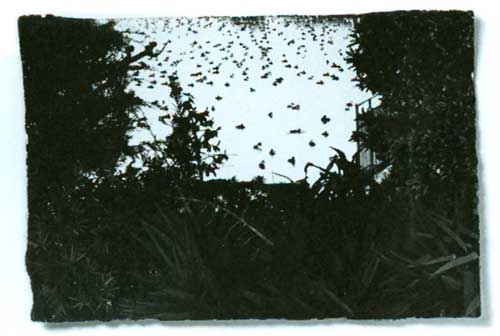
I’ve been an environmental activist for a long time, working hard for two basic causes in the Yaak valley: to promote local and sustainable small-scale selective logging practices, rather than the industrial clearcuts of the past, and to seek permanent wilderness designation for the last fourteen roadless areas. Fourteen little gardens, ranging in size from one thousand acres to thirty-eight thousand acres. Fragments and crumbs.
Throughout all this valley, which is nearly a million acres wide, with 97 percent of it public land—land belonging to no individual or corporation, but to every American—there exists some of the wildest and most biologically diverse country in the Lower 48, and yet Congress has never allowed even a single acre of it to be protected as wilderness.
Does the forest, do those fourteen little gardens, desire to be protected? Something in me knows better than to claim that it does. But I know also, with every ounce of justice in my heart, that such protection is right and necessary, to preserve the fullness that typifies this valley.
People have been real quiet about this forest, the Kootenai. It hasn’t helped.
Millions of loaded log trucks have rolled out from here, carrying the logs—and the jobs—away to distant and indifferent mills. All I ask for is reformation, not revolution. Often I’m shamed by my moderation in the face of what’s being lost, the whole dire lot threatened. The sensitive, endangered species rely on these fourteen gardens for the survival of their race in the world. There are only fifteen or twenty grizzly bears left; only a dozen mated pair of adult bull trout. Only five or six wolves, a handful of wolverine, and a handful of lynx. Only one remaining population of pure-strain inland redband trout, holed up in the last uncut basin in the upper part of the valley. The last officially verified sighting of a woodland caribou was in 1987; the last unofficial sighting occurred in 1989.
After so many seasons of loss and anger and bitterness, and with the scars of community polarization lacing themselves across me like the roads that rip wide to the mountaintops—roads that carry noxious weeds and loud machines and dozers and chainsaws into the last gardens, and that funnel mud and gravel down into the rivers during each spring’s runoff—I’ve noticed that I’m becoming less bitter; that indeed I think I’m losing some of the anger that once burned so steadily in me, and with such incandescence.
I’m not entirely comfortable with this waning, and find myself puzzling over it often. I wonder if in this softening I’m letting down the wild places that have for so long sustained my spirit. Durable, dependable—I want to be a good warrior, and to speak out clearly and calmly, in my own voice and in no other’s, in support of my views on justice, and against actions that I perceive to be unjust. It’s one of the activist’s oldest and most heartfelt laments: without justice, how can there be peace?
How much of my slowing down is maturity, however, and how much is fatigue? And worse yet—worst of all —how much of that slowing down is me ceding to injustice and to silence, merely for reasons of personal comfort: because I might be tired or made lonely by that incredible roadmap, that latticework of hatred carved upon my body?
Often these days I find myself stopping, while on a walk or backcountry skiing, to stare off into the forest, puzzled, almost as if consciously asking the forest for a clue: some counsel as to what is transpiring within me, and why, and whether it is “all right”—whether my occasional softening and slowing of pace is still loyal or fair or just.
I’ll stand, gazing at some slant of light, a patch of snow, or some dark shadow cast by a tree trunk, and wait for an answer; and when none comes, I turn and go on, and in that going, I imagine sometimes that I feel a little distance growing, like the subtle rift of an icebound fracture-line along an avalanche slope, high in the mountains late in winter. At other times, I feel a bit of the distance close back up, like the knitting of broken bones, or the binding of lichen to damp stone.
Sometimes I imagine that I am indefatigable and that the valley is fragile, in need of human support, compassion, and loving celebration. Other times—increasingly—I imagine that I’m the bent-over, ailing one, in need of tucking in beneath the valley’s wing for a while.
I look out at the forest often, trying to figure out what pattern is evolving. I try to figure out why I’m feeling two things these days, rather than the one thing I felt so resolutely when I first moved here years ago, which was to fight, fight, fight. Sometimes I grope for the easy lesson, the easy pattern. I tell myself that my activism, my fiery soul, is like an old river cutting ever deeper, or like an old forest, slowing in its growth but growing ever more strong and stable. Or that my heart is like the sleep of bears who rest for six months of the year, beneath the snow and ice; or that my heart, my desire for justice, possesses the patience of glaciers—intractable and inscrutable, creeping along or retreating, but always, forceful and desirous. Or that my heart, and my work on behalf of this valley, is like the migrations of the wild geese, going away for a while but always returning, always, with unshakeable fidelity.
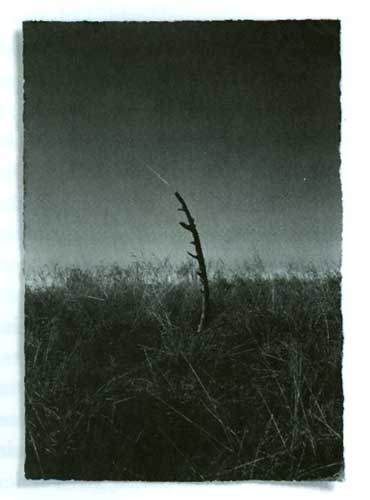
I think my occasional pauses and restings, these days—the eddies existing where once there were none—is perhaps most like the coming and going of migratory animals.
Perhaps my coming and going is like the seasonal movements of the deer and elk (and of the lions and wolves that follow them): rotating from the shady cool north slopes in summer, onto the sunny south-facing slopes in winter.
Many days I long mightily for a new young activist, or a handful of them, to come drifting in. I know these are not the generous thoughts of a truly strong leader, or a warrior, but many days, I feel them. I try to neither embrace such thoughts nor push them away. They come on, seemingly on their own—or, who knows, perhaps flowing in from out of the woods.
Sometimes the navel-gazing gets even worse. Sometimes I wonder if the near-ceaselessness of my campaigning has not somehow been counterproductive. Sometimes I wonder if the thing I desire most—peace, and a solution that accommodates all of the different desires and needs of this region—peace within the forest, and peace within the long-warring human communities that live at the edge of this dark forest—is not somehow counterproductive to my cause.
Perhaps it’s merely a symptom of shell-shocked activist fatigue, but lately it seems that the harder I work, the further behind I fall on the path toward these goals—peacemaking, moderation, and the discovery of common ground in the community. It seems some days as if the intensity of my desire casts a shadow that is the opposite of my desire; or again (a truly frightening thought), as if my desire for peacemaking and common ground is the shadow, the other thrown by the gigantic force of the despoliation, the quick-buck greed, the invisible and the nonaccommodating way of the other world. Who can say whether the kestrel summons the field mouse, and the lynx, the hare, or vice versa? What does it matter, really? And if the answer were known—which is real, and which is the shadow—what other choice is there?
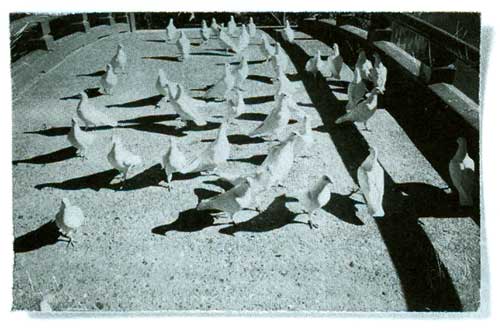
Perhaps it’s just that I’ve been in these mountains a long time. Long enough to have become a part of them, and to hear them whisper Peace, and Calm down. Perhaps this same message slides between the peaks and down the myriad canyons every night after all the human beings have gone to sleep. Perhaps this message has entered my dreams, and now shapes my waking life.
Many days it feels as if I have run out of ideas, or options. But like a lost hiker—on snowshoes, far back in these tangled mountains—I keep trudging on, one foot in front of the next, on through the deep snow. I’m not even tempted to quit. I’m just frustrated that the end seems ever farther away.
Is it like this for any other inhabitants—the grizzlies or caribou, or the last of the wolverines? Is it like this for any of the individual groves of forest, or even any of the individual trees? Must this frustration, and at times this anguish, be a necessary part, too, of the valley’s wildness?
In my wearing-down, I tell myself this: even when the trees blow over and lie down and begin to rot, they give back to the forest, becoming more productive in their senescence than they ever were in the vibrant, leaping, clamorous growth of their youth.
A forest needs the mulch of rotting logs at least as much as it needs the saplings and seedling of new growth, and as much as it needs the young trees, and as much as it needs the big old trees. The beetles and ants that sweeten the mulch are as vital for the bears as any of the bright green needles of living trees, or more vital. The flicker-pounded cavities in the rotting hulks and husks of tree-corpses provide greater warmth and security for dozens of different species of vertebrates, as well as invertebrates. In this lush forest, there is nothing about rot that is not good.
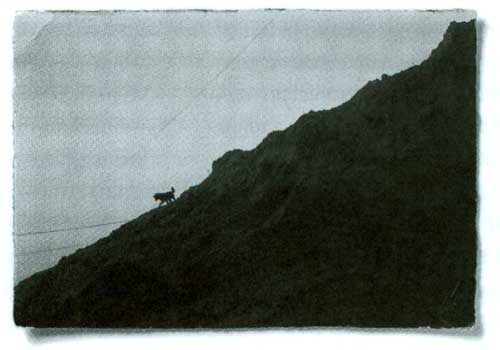
Increasingly, I find that I have a craving. I want more and more to step away from essays such as this one. Away from my lobbying trips to D.C., and away from my volunteer board memberships and leadership positions in various local grassroots organizations. Away from my letters to Congress (even as I know I will never stop doing this), to return exclusively instead to the crafting and the writing of stories—short stories and short-short stories. And the making not just of long, languorous novels but beautiful little poems, and paintings, tiny scenes no larger than a sheet of notebook paper. Small sketches. I feel this yearning deeply, intuitively, biologically, feel it like blood draining from a wound, and I hope to be able to begin soon. Just a little longer, I keep telling myself. Just one more year, or maybe two at the most.
I have hiked nearly all of the hills and mountains and creeks in this million acres, many of them repeatedly. This landscape, only recently uncovered by the cap of the last glaciers and poised between the cusp of the burning West and the rotting Pacific Northwest, is still totally in flux—sun and shadow, sun and shadow, with those dualities creating the larger oneness, a wholeness so complex, I have not yet been able to decipher it and likely never will. (I think that even the essence of time itself is somehow still in flux up here, in dynamic indecision, with regard to the valley’s future.)
Fiercely, I believe that every ounce of energy counts. The future of this wild place, and indeed of this wild state, is up for grabs. Hope still exits for this bioregion. Not the distant hope of the future, but hope in the moment, hope now, that the wildness of this place can be preserved. Hope that even just one more person’s voice, no matter whether strident or calm, can help tip the balance of time and circumstance for this relatively unpeopled landscape; hope that one more poem, photograph, song can help tip the cant of fate toward the preservation of the wild, the thing itself, rather than away.
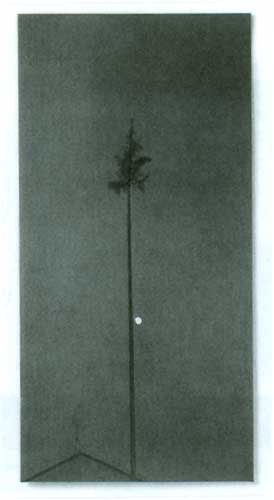
The situation demands that I hurry up and work harder, and so I do—and yet even far within me, like the sound of metal banging against metal in a high wind, I hear, and feel, that yearning to slow down and step back; and I do not know what to do except to keep doing both things, the thing and the shadow of the thing—making pretty little pictures, and continuing on with the slogging grunt-work of the hardcore activist—until one day, I assume, nothing will be left. There is nothing that cannot be tossed into the bonfire of awareness.
I suspect there will never be answers. Instead there will be only the awkwardness of the struggle—and perhaps the struggle is a sublime kind of grace in itself, which merely disguises itself as awkwardness. I will keep traveling across the deep snow, and from time to time I’ll stop, and look far off into the woods.
Thank you for subscribing to Tricycle! As a nonprofit, we depend on readers like you to keep Buddhist teachings and practices widely available.
